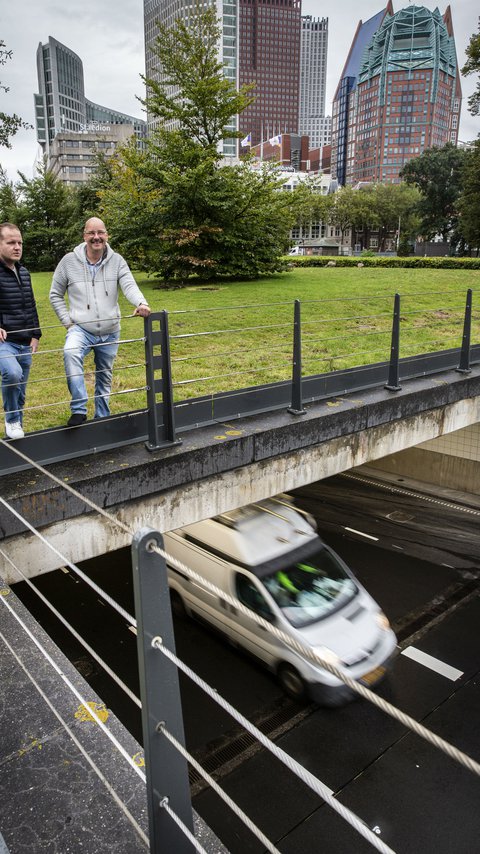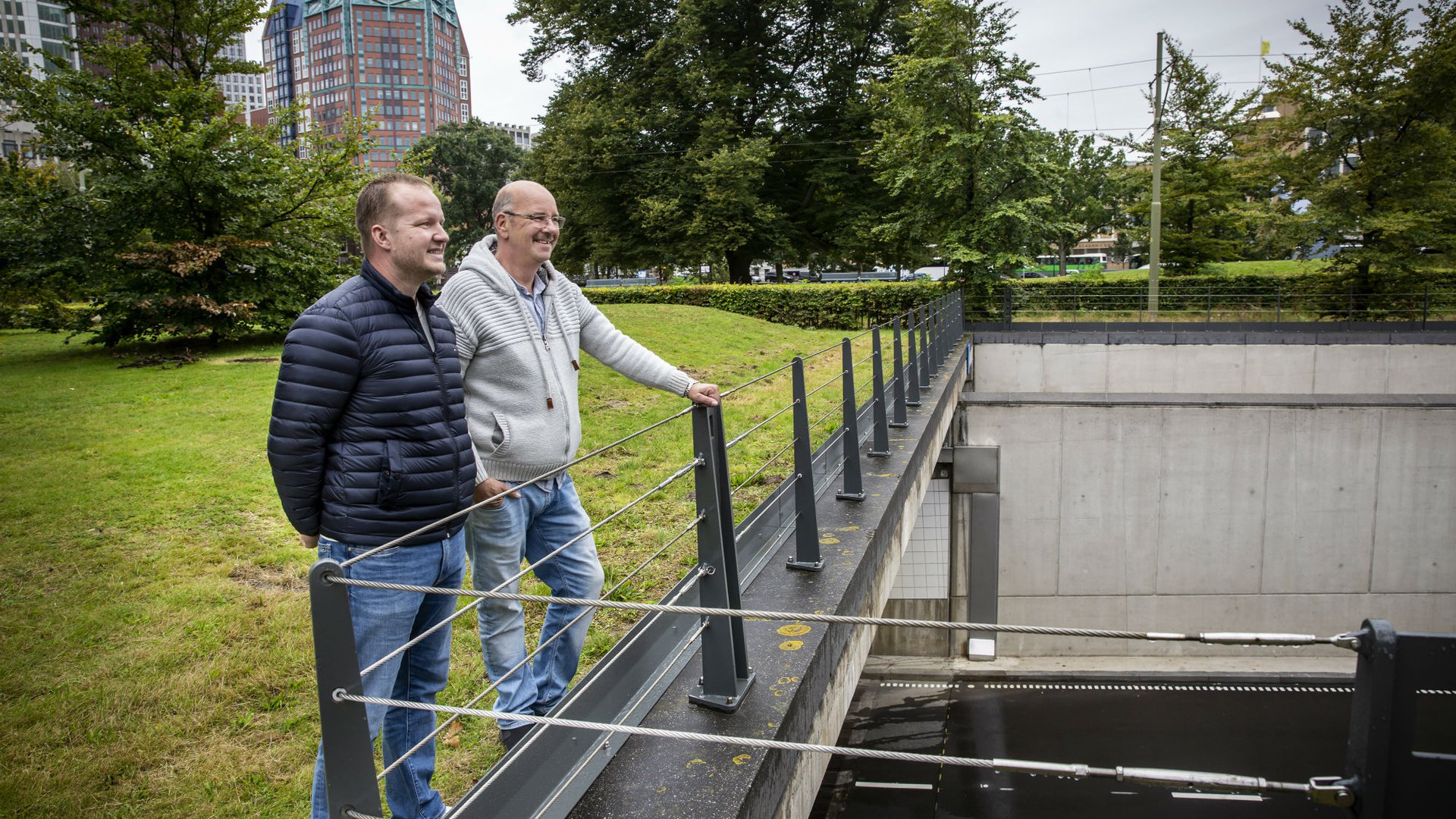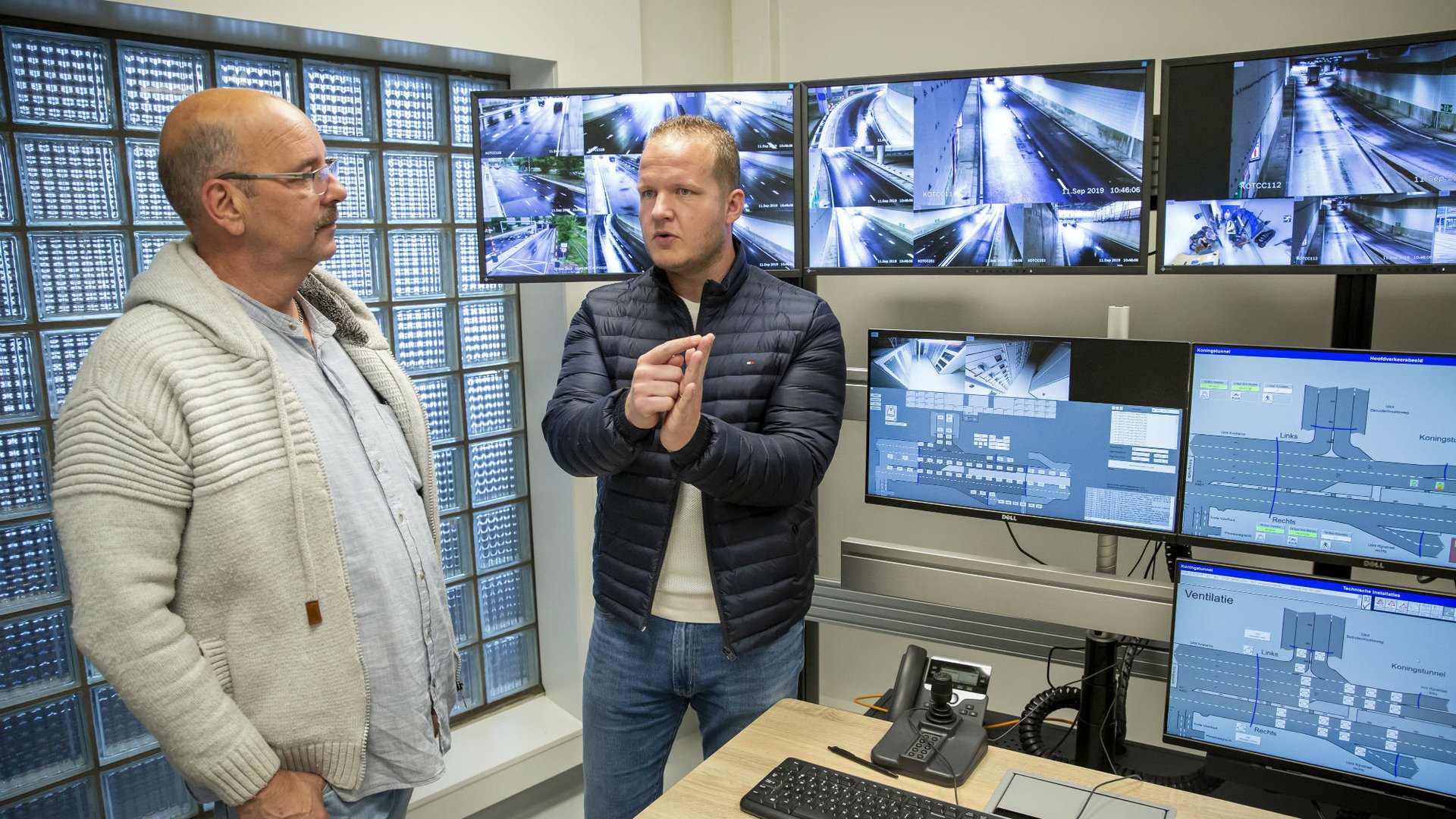
It seldom happens that a tunnel is delivered ahead of the deadline. Yet, this is exactly what happened in the Hague, where the renovation of the Koningstunnel was completed five weeks earlier than planned. This was partly due to the tunnel’s digital twin, which made it possible to carry out the project in a far more efficient manner.
“These are the brains and heart of the Koningstunnel”, say project leader Jeffrey van Kortlaar and site manager Arthur Hartman. They are standing in the service building which is a stone’s throw away from the Central Station. The adjacent 750-metre-long tunnel that goes underground at the Malieveld can be seen on camera images in the control room.
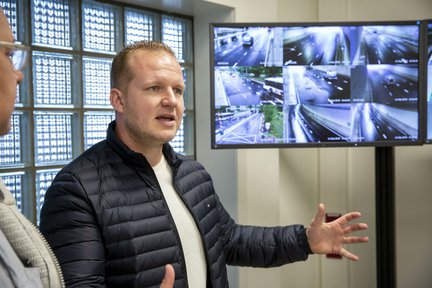
“The first step in the Koningstunnel renovation was scanning the entire building using 3D equipment. We then created a digital model, in which we started moving around new equipment, while taking into account the requirements of the Dutch Building Decree.”
Opposed to analogue versions of the model which require you to compare drawings yourself, the 3D model will indicate potential clashes straight after digital input. As a result, you will be able to find solutions much faster. “We thought the pumping installation had to be moved to another room, but the 3D model showed that wouldn’t be necessary if we slightly altered the extension”, Jeffrey says.
Not quite the digital guy
For site manager Arthur this 3D model means he needs less time to get up to speed on the new situation. “Wearing 3D glasses, I was able to walk through the digital space. This way, I got a clear image and it was far easier for me to say in which order work had to be carried out.” The site manager is proud of this project, but does admit he initially wasn’t jumping with joy at the thought of working with the ‘digital twin’.
“To be honest, I’m not quite the digital guy. That’s why, at first, I found it really hard to work with the tablet. However, I could ask my colleagues anything and continued to discover more and more tricks. Before, I used a measuring tape to work on the construction drawings, now I click on two points in the digital drawing and the distance between them appears on the screen. I have to say it took some time to get used to it, but the digital model really helped me. It offers so many opportunities, especially for complex projects.”
Parallel testing
We don’t only benefit from the ‘digital twin’ in the construction phase, there is also much to gain during the testing phase, says project leader Jeffrey. “If you are going to clone the tunnel, you can also connect that model to all the transmission cabinets, so you can test new equipment without actually being in the tunnel. This means the testing phase can take place not after, but during or even before the renovation of the tunnel. In that respect, we have – in close cooperation with Siemens – done something quite unique with this project and, as a result, were able to progress faster.”
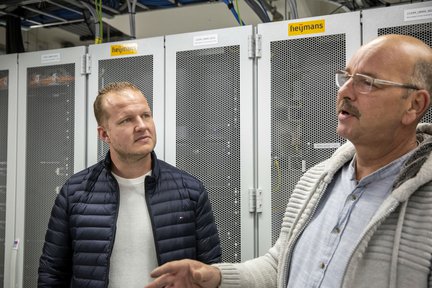
Arthur Hartman had to get used to the digital working method, but wouldn’t have it any other way now. Beside time gain, he sees another great advantage of working with a digital twin. “As you can show the new situation up upfront, it becomes much easier to get colleagues on board. You show them the issues you encounter and look for solutions together. In this project we release the newest version of the digital model every week, including a log book full of adjustments. This way we really worked as one team. And we had the big advantage of hardly any discussions after the job was done, because we were already aware of everything upfront.”
